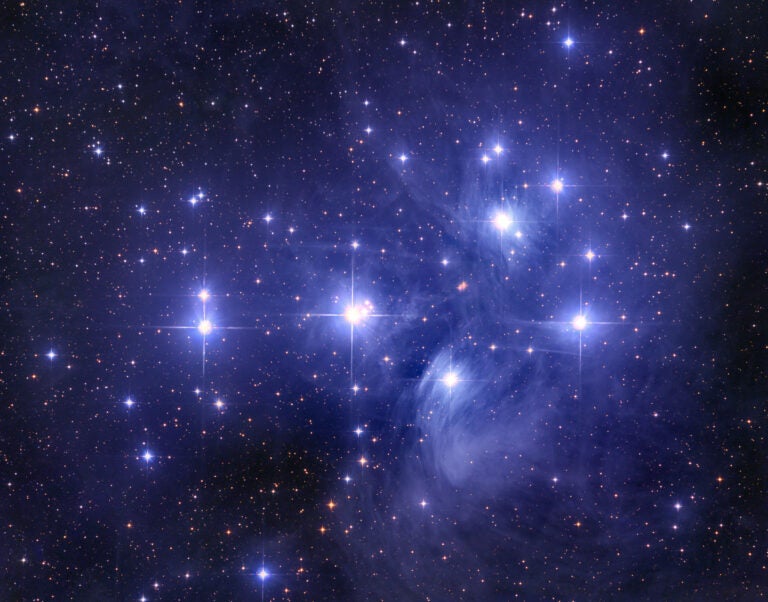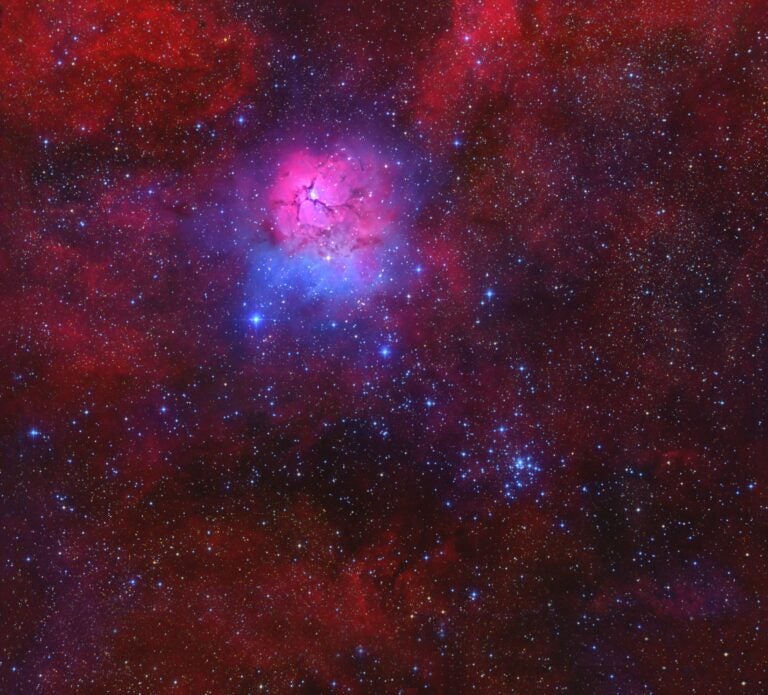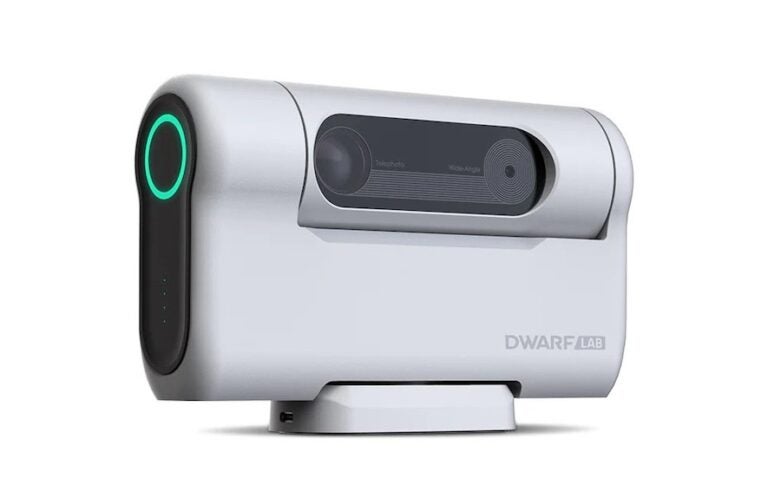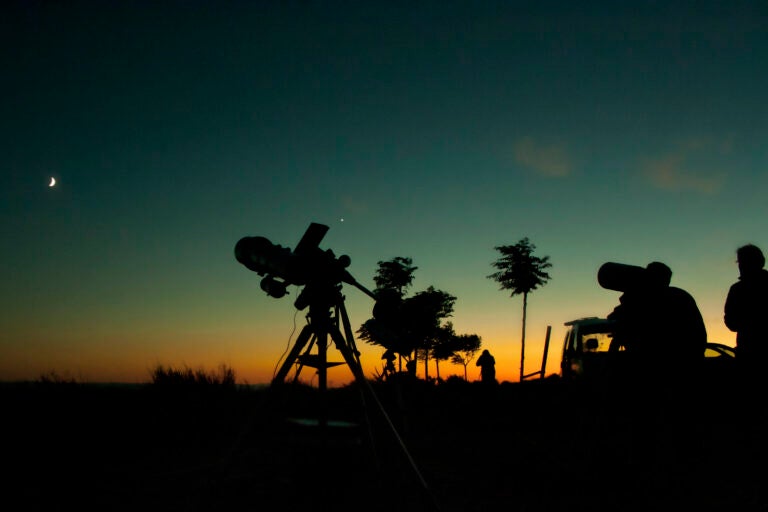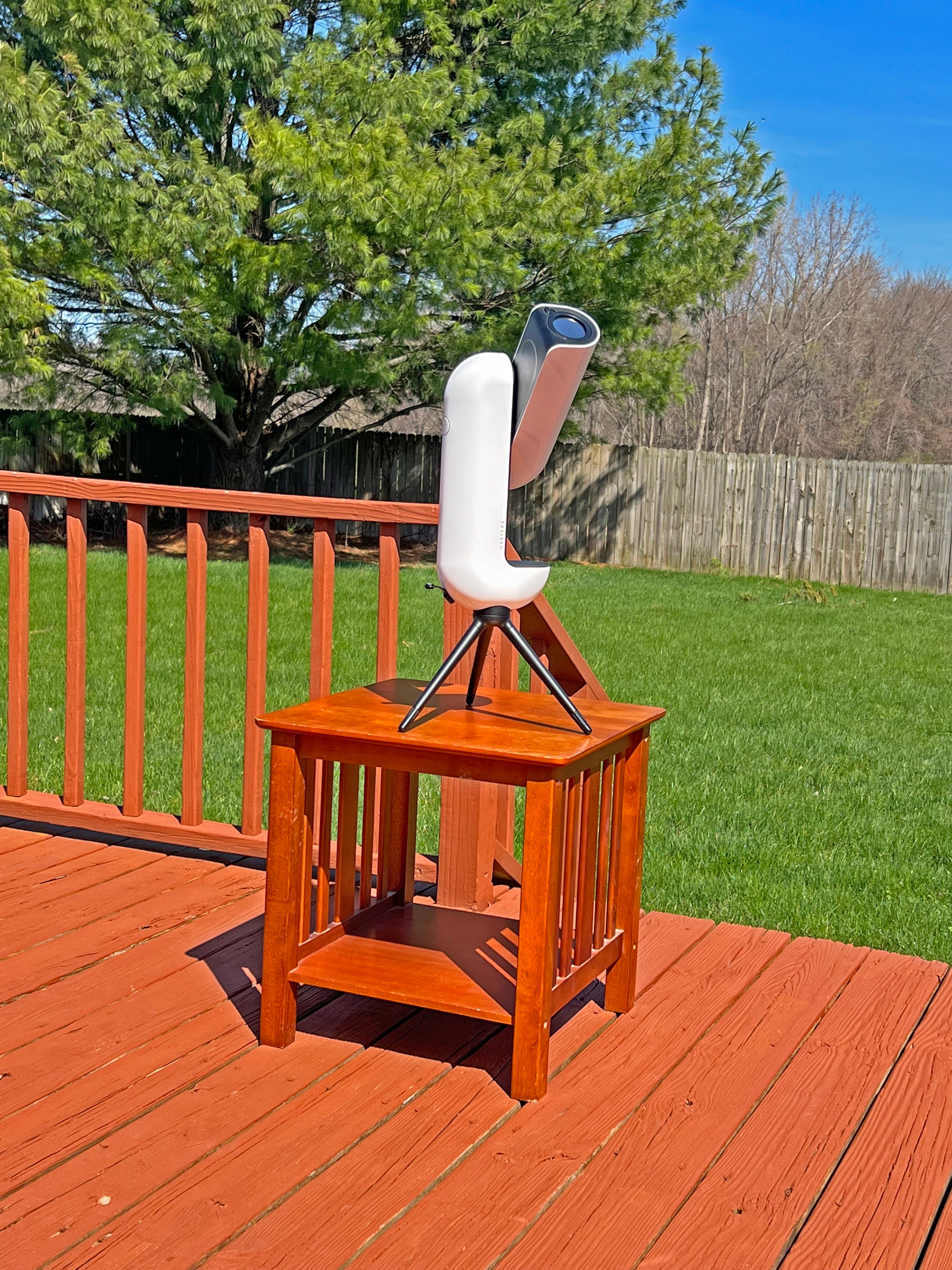
Astronomical equipment has come a long way in the first two decades of the 21st century, and Vaonis provides an instrument that sets a new standard for observing and astrophotography.
Its name, Vespera, derives from the Latin vesper, meaning “evening.” This little instrument is the sister to Vaonis’ larger flagship scope, Stellina, which was built to work on the same design principles. As with the Stellina scope, which I reviewed in the August 2020 issue, the Vespera is meant to provide smart imaging and is not equipped with eyepieces.
Tech insights
The product design is elegant and simple. When the scope first came out of the box, my grandson said it looked like a giant earbud case. Weighing only 11 pounds (5 kilograms) and measuring 15 inches long and 8 inches wide (40 centimeters by 20 centimeters), this instrument is incredibly portable. There are several accessories available, including a custom-built backpack. For this review, Vaonis also sent three filters that easily snap in place on the telescope’s objective lens: a light-pollution filter, a dual-band filter, and a solar filter. (These filters are normally sold separately.) The dual-band filter is a narrowband interference filter that improves images of nebulae, and the solar filter provides an excellent white-light image of the Sun.
Also provided for the review was a hygrometer sensor. This tiny, 0.5-inch (1.3 cm) device screws into a slot next to the objective lens. When temperature and humidity reach a critical point, the sensor will activate a heating ring around the objective lens to prevent dewing. This is a very important accessory, since the telescope has no dew cap. The telescope comes with a USB charger, a bubble level, and a tabletop tripod that screws into the base of the instrument.
Note: This post contains affiliate links. When you buy a product through the links on this page, we may earn a commission.
The telescope is equipped with a 50mm apochromatic objective that, according to Vaonis, has a “unique quadruplet lens, formed by two groups of two lenses made of lanthanum glass.” Lanthanum is a rare Earth element that helps reduce light dispersion when used in optical systems. As a result, the telescope provides extremely sharp images. The Vespera also produces a chromatic aberration- and astigmatism-free image. With a focal ratio of f/4, a focal length of 200mm, and a magnification of 30x, the Vespera functions as a high-tech rich-field telescope.
At the heart of the telescope is a Sony IMX462 sensor. This technology provides a compact low-light-sensing device. It’s easy to capture most extended objects with 8 megapixels of resolution and a 1.6° by 0.9° field of view. Mosaic mode, which can be accessed in Vaonis’ Singularity app, will allow for a wider field of view. The Vespera is also waterproof, which is great when dew starts to settle on the telescope.
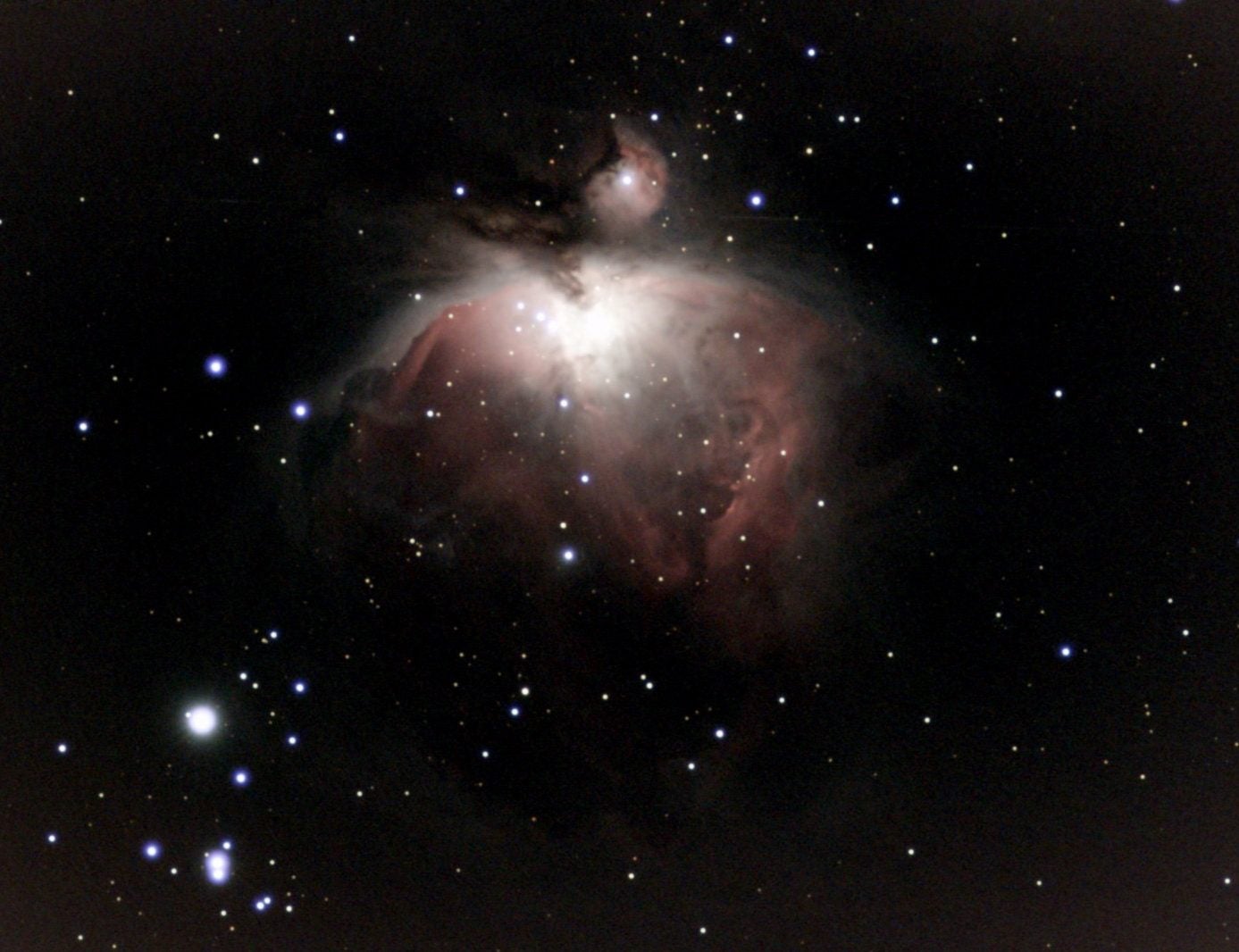
Loading the sky
Getting ready to observe with the Vespera is uncomplicated and intuitive. The unit has a small disk at the bottom of the telescope where three 8-inch (20 cm) legs can be attached to create a sturdy tabletop tripod. The USB charger magnetically snaps into place. On a full charge, the telescope can operate for eight hours, or about a full night of imaging. All that must be done for the physical setup is to ensure the scope is sitting level. The included bubble level attaches magnetically to the side of the telescope. The tripod legs can be adjusted a bit to level the instrument.
The Vespera is operated entirely from a phone or tablet. The Singularity app, developed by Vaonis, is available on both the App Store and Google Play. Simply download the app to your preferred device — I chose to use an iPad Pro for the large screen. When the app is first opened, information about your local weather conditions, Moon phase, and suggested objects for viewing appear. The Vespera has its own Wi-Fi transmitter, which allows it to connect with your device. Once the scope has been initialized, you can start observing.
Version 1.18.2 of the app provides more than 4,500 objects for viewing. It is also possible to input right ascension and declination to observe objects not in the catalog. The Vespera has perfect tracking, which is essential for long exposures. Once in operation, the scope can be left completely unattended. Images can be saved as JPG, FITS, and TIFF files. The images can also be further processed later using the app or other available software.
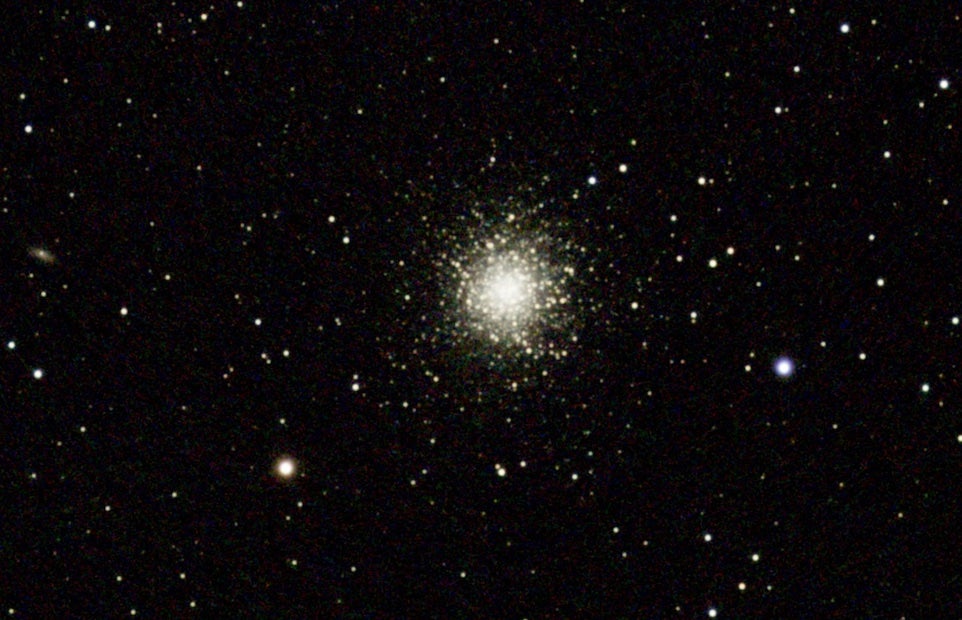
Choosing a target
I wanted to photograph the Orion Nebula (M42) first. I simply chose M42 from the list of recommended objects and watched as the scope started to capture the image.
You can watch the image “build” on your device’s screen. The longer the exposure, the more detailed the image will become. This is accomplished by stacking the images. Within seven minutes, I had a wonderfully detailed image of the Orion Nebula from my backyard. The Singularity app even provides the number of stacked images for each object — in this case, only 42 were required.
Next up was the Whirlpool Galaxy (M51). I let the Vespera track M51 for 17 minutes, stacking 101 images. The results were amazing, with the bright galactic center and dust lanes in the spiral arms clearly visible. Each of the images can be downloaded immediately and shared with others quickly.
Throughout this observing session, I chose each object manually. Alternatively, if you want to take a break, the “Plan My Night” feature allows you to set up an observing list in advance. Once you have input your desired object and the length of each exposure, the scope can be left unattended to capture the images you have chosen. I used this feature to allow me to visually observe with some of my other telescopes while the Vespera was working away on its own.
The Vespera is not just for nighttime observation. With the solar filter, it is possible to acquire high-definition images of the Sun. The scope will also find and track the planets and the Moon. However, because of the short focal ratio, planetary images are less than impressive.
Good with the bad
I found very few drawbacks to this instrument. One issue, however, was dealing with the wind. The arm that contains the optics tends to vibrate when a strong breeze kicks up. This can affect the quality of the final image.
When I showed the Vespera to friends and told them it costs about $1,500, the usual reaction was, “That’s a lot for a little telescope you can’t look through.” But in my opinion, the Vespera is a bargain for the advanced technology available at your fingertips and as an aid for providing beautiful images that can easily be shared with others.
Based in Montpellier, France, Vaonis is a small company with the motto “Take people on a journey through space.” The founder, Cyril Dupuy, formed his company in 2016. Working with the French design firm Ova, Dupuy and his staff have created not only the Vespera, but the Stellina and Hyperia as well. A visit to the famous Nice Observatory sparked his lifelong passion for astronomy. Now Dupuy says he wants to “make astronomy accessible to everyone.” His goal is to provide high-quality and beautiful instruments that are easy to use and deliver outstanding results.
Note: This post contains affiliate links. When you buy a product through the links on this page, we may earn a commission.



